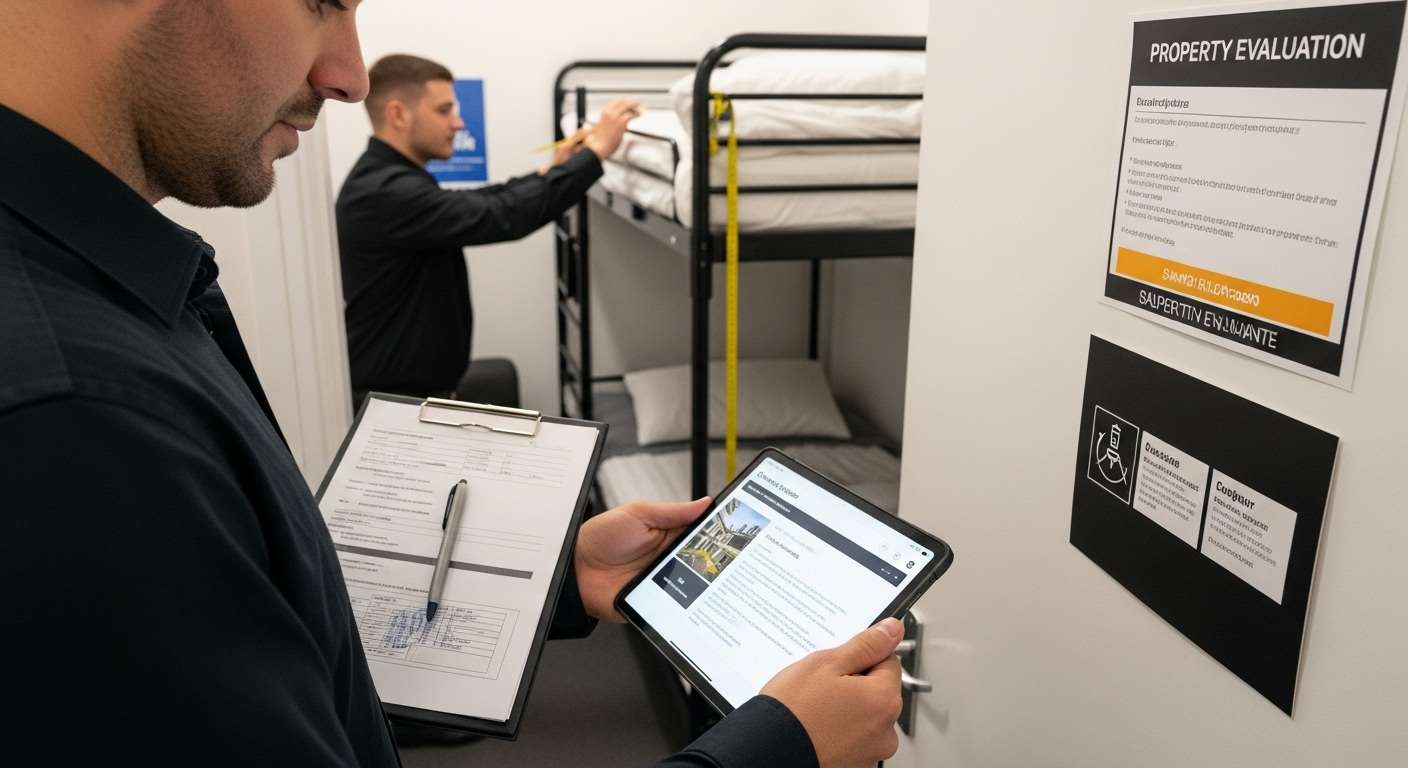Selling a student HMO (House in Multiple Occupation) property requires a tailored approach to maximize its value and attract the right buyers. Student HMOs are unique due to their tenant type, location, and income potential, making it essential to prepare thoroughly and understand what investors are looking for. Whether you’re selling a single student HMO or a portfolio, this guide will walk you through the entire process to ensure a successful sale.
Understanding Student HMO Pricing
Student HMOs are typically valued based on their rental income and occupancy rates, but location also plays a significant role. Properties in proximity to universities or colleges tend to command higher prices due to strong tenant demand. Additionally, amenities such as modern furnishings, en-suite rooms, and communal spaces can increase a property’s value.
Factors That Impact Student HMO Pricing:
- Location: Proximity to universities, public transport, and local amenities.
- Rental Yield: Annual rental income compared to the property’s asking price.
- Condition: Quality of furnishings, compliance with HMO standards, and overall maintenance.
- Tenant Demand: Areas with multiple universities or growing student populations tend to have higher demand.
Pro Tip: Research recent sales of comparable student HMOs in your area to gauge realistic pricing.
Preparing Documentation for a Student HMO Sale
A complete and organized document pack is critical when selling a student HMO. These documents reassure buyers that the property is compliant, profitable, and ready for transfer. Missing paperwork can lead to delays or reduced buyer confidence.
Essential Documents for Selling a Student HMO:
- HMO Licence Certificate (if required)
- Planning Permission Documentation (if converted to HMO use)
- Fire Safety and Electrical Certificates
- Energy Performance Certificate (EPC)
- Rental Schedule (including tenancy agreements and payment records)
- Management Contracts (if using a property management company)
- High-Resolution Photos and Floor Plans
- RICS Valuation (optional but recommended)
Pro Tip: Providing a clear rental history, including void periods and any maintenance costs, helps investors assess the property’s profitability.
Identifying the Right Buyer for Your Student HMO
Understanding your target buyer is key to marketing your student HMO effectively. Buyers of student HMOs typically fall into two categories: experienced investors and first-time landlords looking for high-yield properties.
Characteristics of an Ideal Buyer:
- Experience: Familiarity with managing student tenancies and understanding compliance requirements.
- Financing: Pre-approved financing or proof of funds for a cash purchase.
- Interest in Student Markets: Preference for properties in high-demand student areas.
Pro Tip: Vet buyers by asking about their experience with student HMOs, financing arrangements, and plans for property management. This ensures a smoother transaction and reduces the risk of deals falling through.
Enhancing Your Student HMO’s Appeal
To achieve the best price, ensure your student HMO is presented in the best possible light. Student tenants prioritize location, affordability, and convenience, while buyers value compliance, profitability, and ease of management.
Steps to Maximize Appeal:
- Modernize Interiors: Update furnishings and appliances to meet student expectations.
- Ensure Compliance: Confirm the property meets all HMO licensing and safety requirements.
- Highlight Amenities: Showcase proximity to universities, public transport, shops, and social areas.
- Minimize Maintenance Concerns: Complete minor repairs and present the property as move-in ready.
Pro Tip: Include high-quality photos and detailed descriptions when marketing the property to emphasize its strengths.
Managing Tenants During the Sales Process
Selling a student HMO with tenants in situ is common and can make the property more attractive to buyers seeking an immediate rental income. However, managing tenants during the sales process requires clear communication and careful planning.
Tips for Managing Tenants:
- Notify Early: Inform tenants about the sale and reassure them that their tenancy agreements remain valid.
- Schedule Viewings: Provide plenty of notice for property viewings to minimize disruptions.
- Address Concerns: Be transparent about potential ownership changes and how it affects them.
Pro Tip: Happy tenants often lead to smoother viewings and fewer objections during the sales process.
Setting Realistic Timelines for a Student HMO Sale
The timeline for selling a student HMO can vary depending on buyer readiness and property preparation. Proper planning and clear communication with all parties can help avoid unnecessary delays.
Suggested Timelines:
- Valuation Instruction: Within 48 hours of accepting an offer.
- Valuation Completion: Within 14 days of instruction.
- Solicitor Instruction: Within 48 hours of agreeing to the sale.
- Completion: Typically within 6-10 weeks, depending on buyer financing.
Pro Tip: Work with solicitors experienced in HMO transactions to streamline the legal process and avoid delays.
Common Challenges in Selling a Student HMO
Student HMOs present unique challenges that sellers should be prepared for. Understanding these potential hurdles can help you mitigate risks and keep the sale on track.
Key Challenges and Solutions:
- Buyer Hesitation: Some buyers may worry about tenant turnover. Provide a clear rental history to alleviate concerns.
- Compliance Issues: Ensure the property meets all local HMO licensing and safety regulations before listing.
- Seasonal Timing: The student rental market is often cyclical, so selling before the academic year starts may increase demand.
Pro Tip: Address challenges proactively to prevent them from derailing the sale or affecting the property’s value.
FAQs
1. Can I sell my student HMO with tenants in place?
Yes, selling with tenants in situ is common and can be an attractive selling point for investors seeking immediate rental income.
2. How is a student HMO valued?
Student HMOs are often valued based on rental income, occupancy rates, and location. A professional valuation can provide an accurate assessment.
3. Do I need an HMO license to sell my property?
If your property requires an HMO licence, you should have one in place before selling. Selling without one can reduce buyer interest and value.
4. How long does it take to sell a student HMO?
A well-prepared sale typically takes 6-10 weeks, depending on buyer readiness and financing.
5. Should I sell my student HMO during the academic year?
Selling during the academic year can demonstrate stable occupancy and rental income, which appeals to investors.
6. What documents are essential for the sale?
Key documents include tenancy agreements, HMO licences, fire safety certificates, EPCs, and rental schedules.
7. How can I make my property more appealing to buyers?
Ensure the property is compliant, well-maintained, and furnished to a high standard. Highlight proximity to universities and transport links.
8. Do I need a specialist agent to sell my student HMO?
While not mandatory, a specialist agent with HMO experience can streamline the sales process and attract the right buyers.
9. Can I sell my student HMO as part of a portfolio?
Yes, selling multiple HMOs as a portfolio can attract institutional investors or experienced landlords.
10. What happens if my property doesn’t sell?
Revisit pricing, marketing strategies, and property presentation to identify areas for improvement.
Selling a student HMO property can be highly rewarding when done right. By preparing thoroughly, targeting the right buyers, and addressing potential challenges proactively, you can ensure a smooth transaction and achieve the best possible price.



